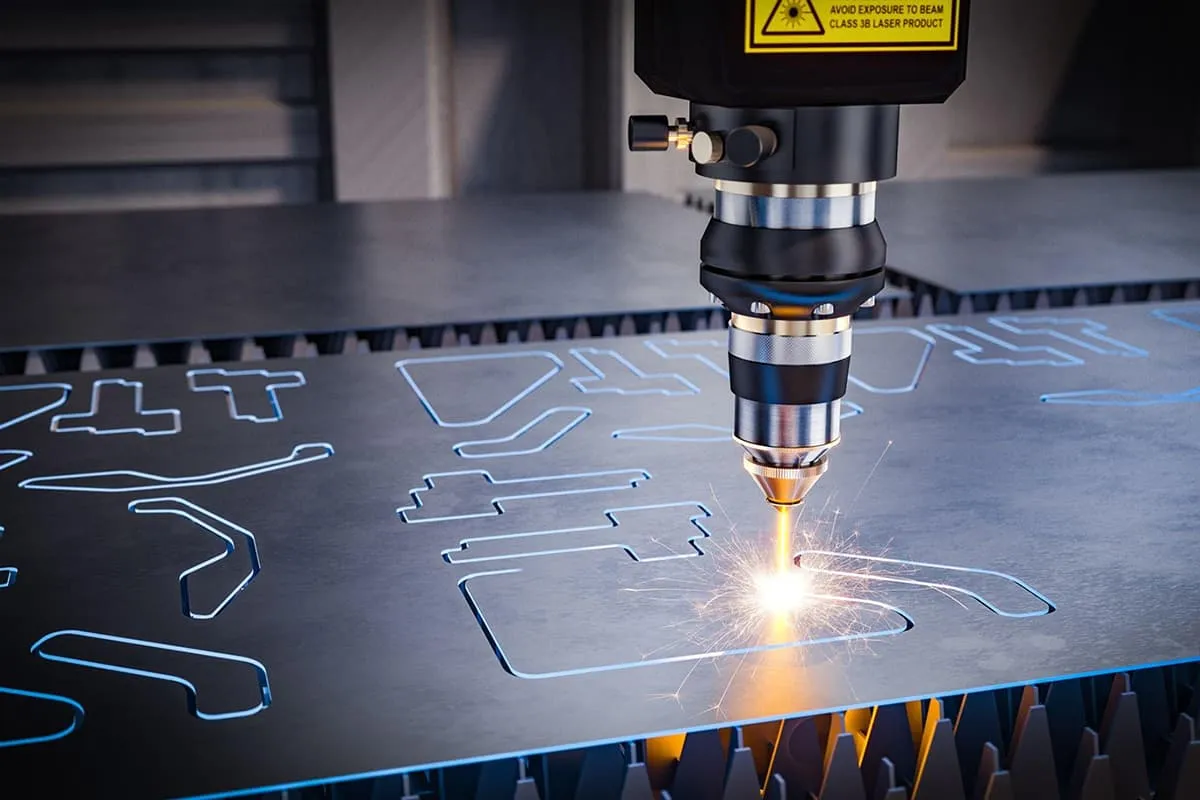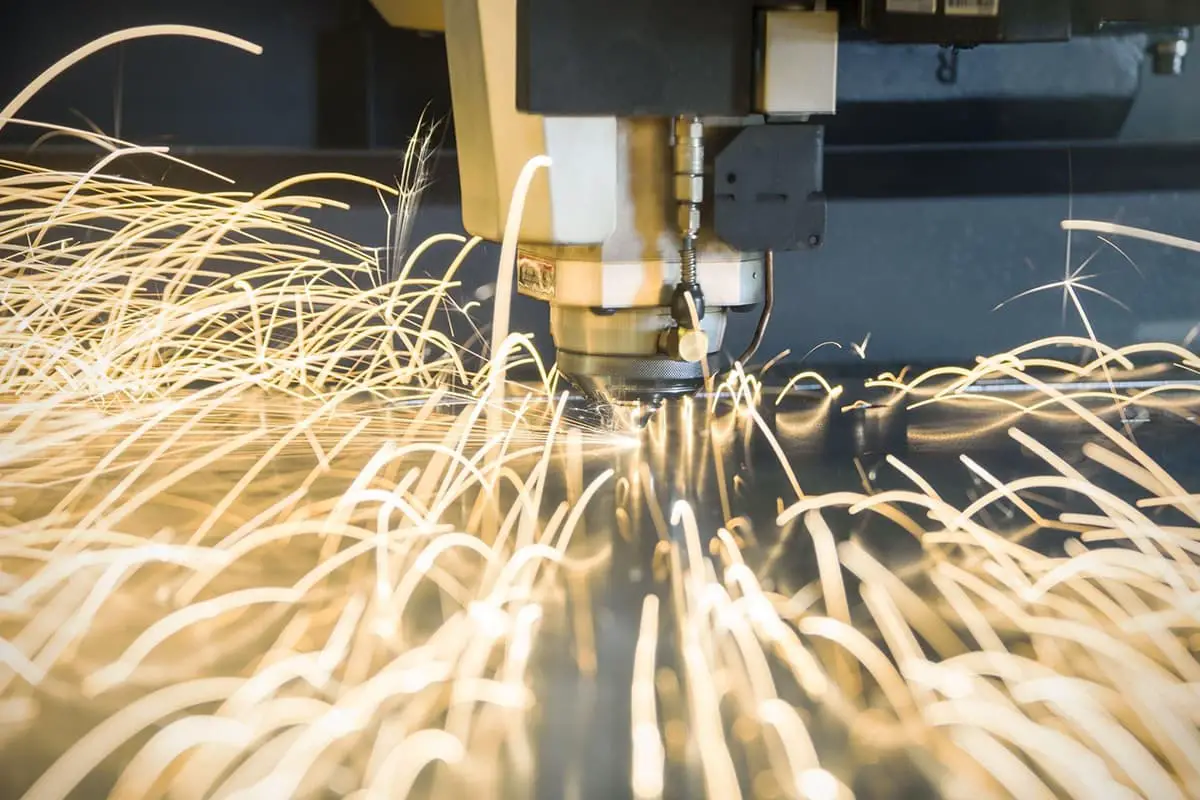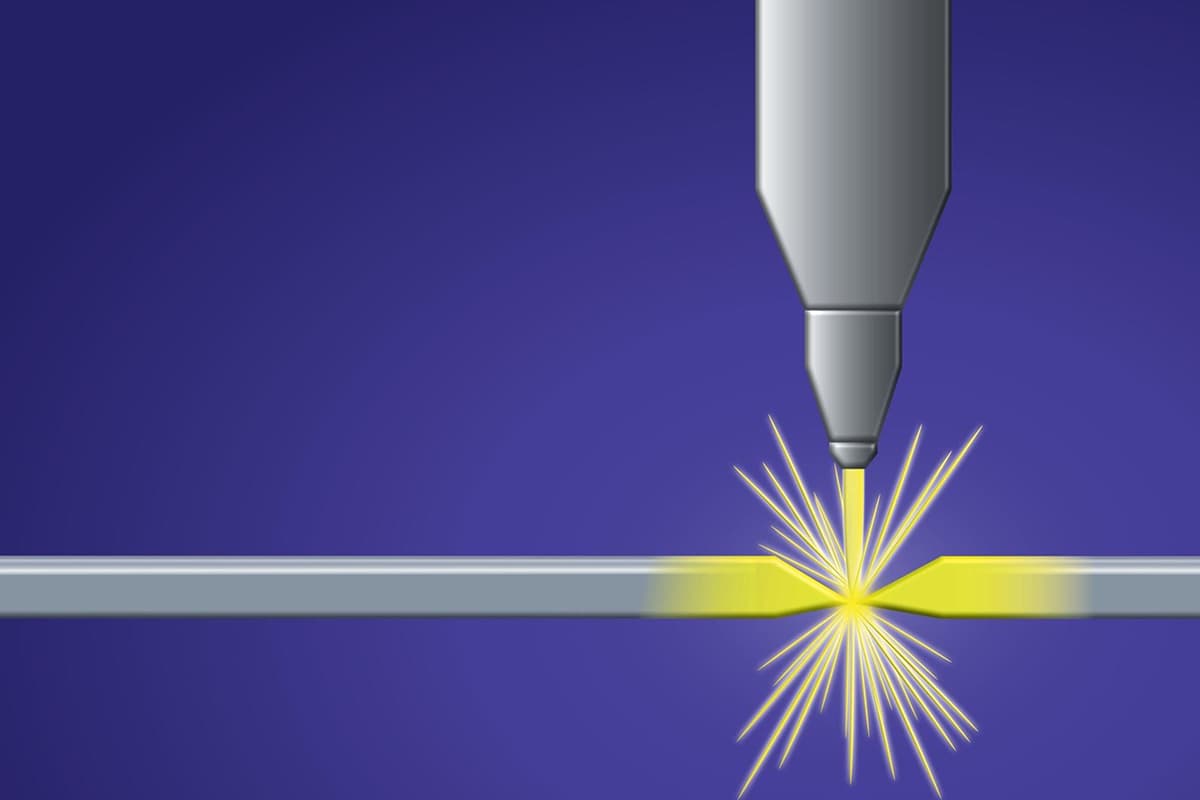
I. Principles of Lasers
Basic structure of a laser:
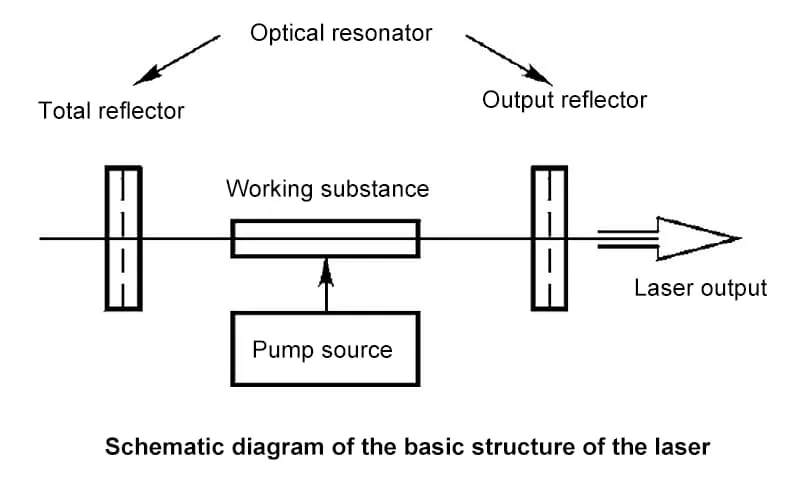
1. Working substance
The laser-active medium refers to the material system used to achieve population inversion and amplify the stimulated radiation of light. It is sometimes also referred to as the laser gain medium. These can be solid (crystals, glass), gas (atomic gas, ionic gas, molecular gas), semiconductors, and liquid media.
The main requirement for the laser-active medium is to achieve as much population inversion as possible between specific energy levels of its working particles, and to maintain this inversion as effectively as possible throughout the laser emission process. For this purpose, the active medium should have an appropriate energy level structure and transition characteristics.
2. Pumping source
The excitation (pumping) system refers to the mechanism or device that provides an energy source to achieve and maintain particle inversion in the laser working material. Depending on the working material and operating conditions of the laser, different excitation methods and devices can be adopted. There are four common types:
①. Optical excitation (optical pumping). This involves using light emitted from an external light source to irradiate the working material to achieve particle inversion. The entire excitation device is typically composed of a gas discharge light source (such as a xenon lamp or krypton lamp) and a condenser.
②. Gas discharge excitation. This involves using the gas discharge process occurring within the gas working material to achieve particle inversion. The entire excitation device is usually composed of discharge electrodes and a discharge power supply.
③. Chemical excitation. This involves using the chemical reaction process occurring within the working material to achieve particle inversion. This usually requires appropriate chemical reactants and corresponding triggering measures.
④. Nuclear energy excitation. This involves using the fission fragments, high-energy particles, or radiation produced by a small-scale nuclear fission reaction to excite the working material and achieve particle inversion.
3. Resonant cavity – To increase the propagation distance of light waves in the gain medium
An optical resonator is typically constructed by combining two mirrors with specific geometric shapes and optical reflection characteristics in a particular manner. Its functions are:
①. To provide optical feedback capability, allowing stimulated emission photons to travel back and forth multiple times within the cavity to form coherent sustained oscillations.
②. To limit the direction and frequency of the oscillating light beams within the cavity, ensuring that the output laser has certain directionality and monochromaticity.
The first function of the resonator is determined by the geometric shape (the radius of curvature of the reflective surface) and the relative combination method of the two mirrors that usually make up the cavity. The second function is determined by the given resonator type’s different selective loss characteristics for light with different travel directions and frequencies within the cavity.
II. Classification of Lasers
By laser working medium:
- Solid-state lasers(Fiber lasers)
- Gas lasers
- Semiconductor lasers
- Dye lasers
- Free electron lasers
Laser operation modes:
- Continuous
- Pulse: Single pulse; Repetitive frequency; Quasi-continuous
By chemical composition:
- Atomic lasers
- Molecular lasers
- Ion lasers
- Free electron lasers
- Excimer lasers
Laser modulation methods:
- Free running
- Q-switching
- Mode locking
III. Typical Lasers
1. Solid-state Lasers
They are divided into two categories: crystal and glass, made by doping activating ions in the base material.
Currently, more than 200 different base-doped systems have realized laser oscillation as the working material, but the three types that are widely used and have good performance are as follows:
(1) Neodymium glass laser
Rare earth element neodymium is doped in glass as the working material, λ = 1.053 μm. Because large volume and good uniformity neodymium glass can be obtained, it can be made into large devices, achieving high energy and power lasers. A laser with an output power of 1014W has been produced.
(2) Ruby laser
- Working material: Ruby crystal
- Output wavelength: λ=694.3nm
- Output linewidth:Δλ=0.01~0.1nm
- Operating mode: continuous, pulsed
- Divergence angle: θ ≈ 10-3rad, generally multi-mode output; Pump power >threshold 10~20%→single mode
(3) Neodymium-doped Yttrium Aluminum Garnet (Nd:YAG)
- Working material: YAG crystal doped with the rare earth element Neodymium
- Output wavelength: λ=1064nm, 914nm, 1319nm
- Working mode: Continuous, high repetition rate pulse
Due to the ability to dope with a high concentration of neodymium, the working material can provide a higher laser power per unit volume, and the laser can be made smaller. If a semiconductor laser is used as the pump source, the device volume can be even smaller.
(4) Continuous Wave Tunable Titanium Sapphire Laser
3900S CW Tunable Ti:sapphire Laser
The high-performance,tunable,solid state IR laser
Output wavelength ranges from 675 to 1100nm
Pumped by an Ar laser or LD pumping a 532nm laser
TEM00 output power can reach up to 3.5Wcw
Applications:
- Spectroscopy
- Fiber laser research
- Telecommunications research
- Semiconductor studies
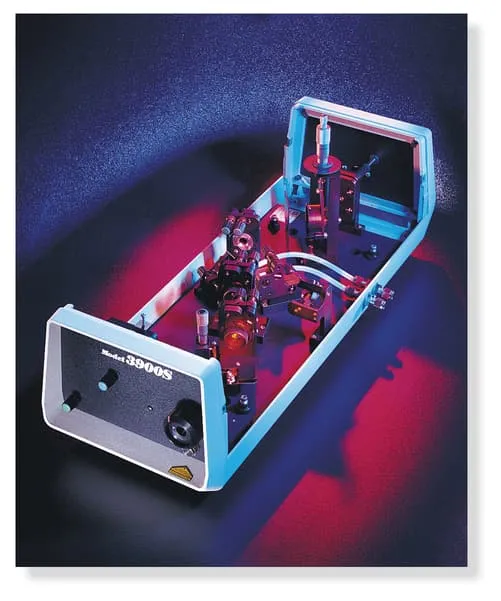
2. Gas Lasers
- Working material: Various mixed gases, good optical uniformity.
- Gas lasers are superior in monochromaticity and beam stability compared to solid-state, semiconductor, and liquid lasers.
- The spectrum lines have reached thousands of types (160nm~4mm).
- Working mode: Continuous operation (most cases)
Most gas lasers have a weakness of not having high instantaneous power.
Reason: Typically, the gas pressure is low, resulting in fewer particles per unit volume.
(1) Helium-Neon Laser
Working Material: Mixture of Helium and Neon gases
The laser is emitted by neon atoms, while helium improves the conditions of gas discharge, thus enhancing the output power of the laser.
Output Wavelength: The commonly used is 632.8nm
Depending on the chosen operating conditions, the laser can output near-infrared, red, yellow, and green light.
(λ=3.39μm; λ=1.15μm)
(2) CO2 Laser

Working Material: A mixture of CO2, He, N2, and Xe gases
The laser is emitted by CO2 molecules, while the other gases assist in improving the working conditions of the laser, enhancing the output power, stability, and lifespan of the laser.
Output Wavelength: λ=10.6μm
The CO2 laser is the highest power output gas laser, with a continuous output of 50kW; and a pulse output of 1012W.
(3) Argon Ion Laser

Argon/Krypton Ion Laser, Stabilite2017 Argon/Krypton Ion Laser
Output Wavelength:
- λ =488nm;
- λ =514.5 nm ;
Highest output power in the visible light area
Output power ranges from a few watts to a few hundred watts.
3. Helium-Cadmium Laser
Using cadmium metal vapor as the emitting material, it mainly has two continuous spectral lines, namely, ultraviolet radiation with a wavelength of 325nm and blue light of 441.6nm. The typical output power is respectively 1~25mW and 1~100mW. Its main application areas include letterpress printing, blood cell counting, integrated circuit chip inspection, and laser-induced fluorescence experiments, etc.
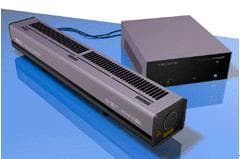
(1). Copper Vapor Laser
Typically excited through electron collision, its two main working spectral lines are the green light at 510.5nm wavelength and the yellow light at 578.2nm. With a typical pulse width of 10 to 50nS, the repetition frequency can reach up to 100KHz. At the current level, the energy of a single pulse is around 1mJ. This implies that the average power can reach up to 100W, while the peak power can soar to as high as 100KW.
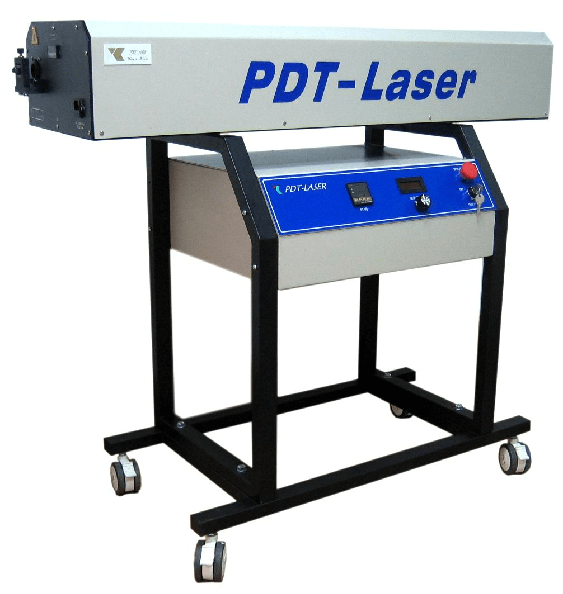
(2). Nitrogen Molecular Laser
The pulse discharge excitation outputs violet external light, with a peak power reaching tens of megawatts, pulse width less than 10nS, repetition frequency from tens of Hz to thousands of Hz. It is primarily used as a pump source for dye lasers, and can also be used for spectral analysis, detection, medicine, and photochemistry. Common wavelengths: 337.1nm, 357.7nm.
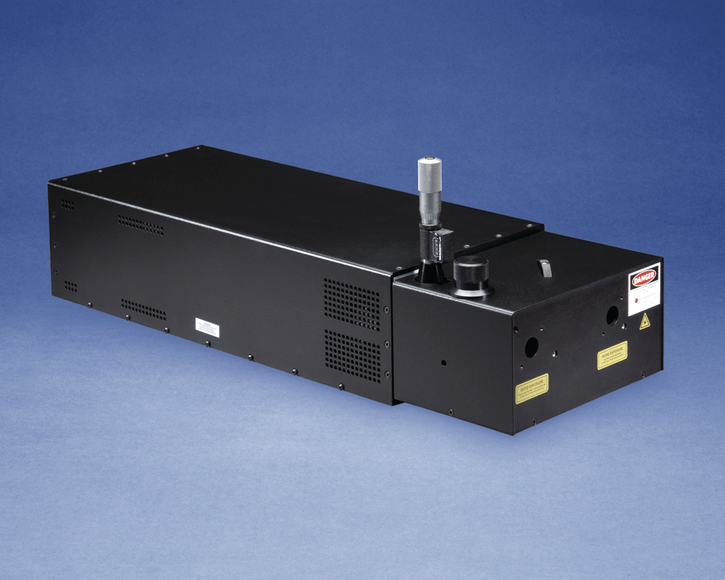
3. Semiconductor Laser
Made of semiconductor materials of different components.
Laser with the active area and the constraint area.
Characteristics: Smallest in size, lightest in weight, long service life, effective usage time exceeds 100,000 hours.
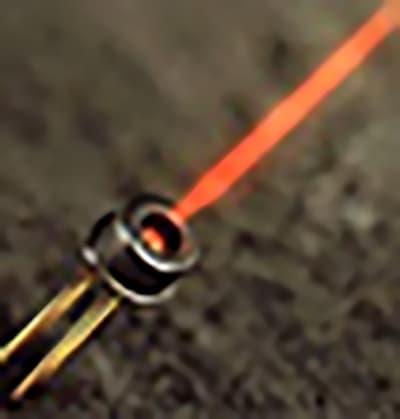
Output wavelength range: Ultraviolet, visible, infrared
Output power: mW, W, kW.
Schematic Diagram of DFB Semiconductor Laser
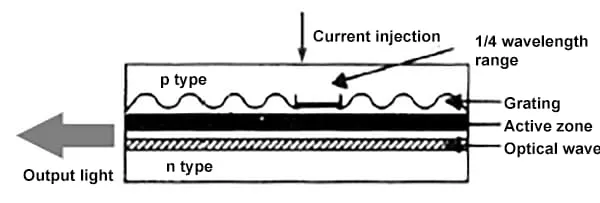
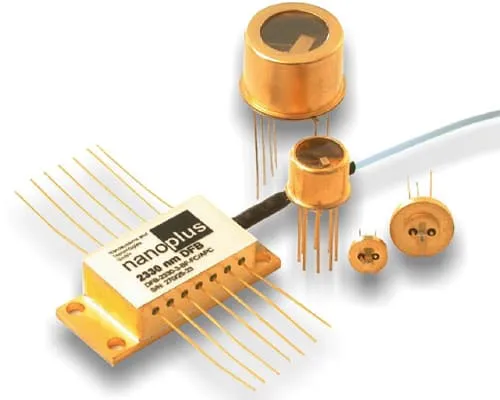
Schematic Diagram of DBR Semiconductor Laser
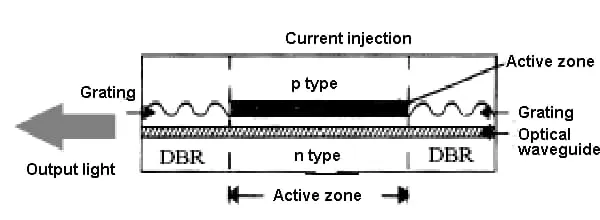
Vertical Cavity Surface Emitting Laser (VCSEL)

Quantum cascade lasers, QCLs
A new type of unipolar semiconductor device based on the principle of electron transition between sub-bands in semiconductor quantum wells and phonon-assisted resonant tunneling.
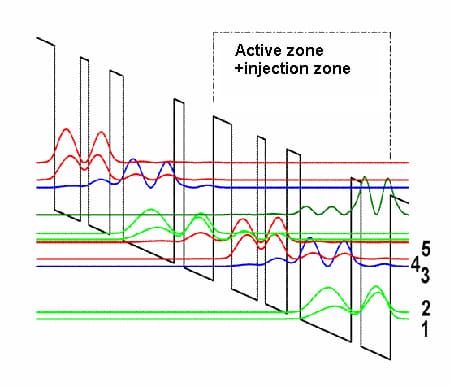
Fiber Coupled (Pigtail Package)
Semiconductor Laser Devices
ProLite Type Fiber Coupled Single Emission Laser
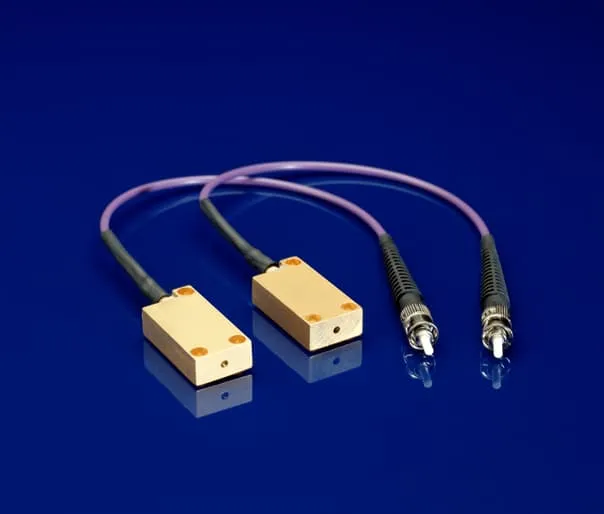
IV. Applications of Lasers
1. Industrial Applications
- Precision measurement (distance, displacement)
- Laser processing (cutting, welding, drilling, engraving)
- Spectral analysis
2. Medical Applications
- Ophthalmology
- General Surgery
- Dentistry
- Dermatology
3. Military Applications
- Laser Rangefinding
- Laser Reconnaissance
- Atmospheric Laser Communication
- Laser Guidance
- Laser Weapons
4. Daily Applications
- Laser Printers
- Computer Optical Drives
- Barcode Scanners
- Laser Anti-counterfeiting
- Laser Neon Lights
5. Applications in the Communication Field
- Space Laser Communication
- Optical Fiber Communication
V. Mechanisms of Damage from Laser Weapons
1. Ablation Effect – Local High Temperature
2. Shockwave Effect
3. Radiation Effect – Strong Electromagnetic Field
VI. Advantages of Laser Weapons
1. No need for ballistic calculation
2. No recoil
3. Easy operation, agile, and versatile usage
4. No radioactive pollution, high cost-effective ratio
Almost all lasers used in optical communication are semiconductor lasers, with only a small number of CATV systems using 1310 nanometer or 1550 nanometer LD pumped solid-state lasers.
Lasers used in communication are mainly of two types: pump light sources used in optical fiber amplifiers and signal light sources used in transmitters.
Lasers used in Free Space Optics (FSO) communication are available in two types: 850nm and 1550nm.
VII. Laser Ranging
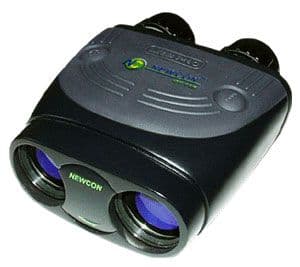
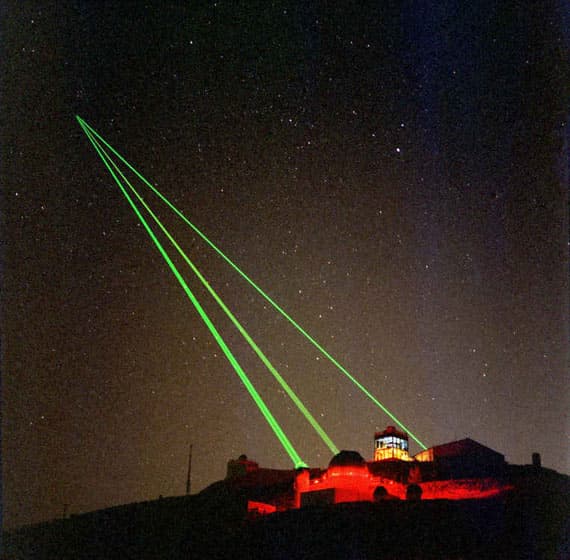
Make use of the monochromaticity, strong coherence, and directivity of lasers to achieve high-precision measurements and inspections, such as measuring length, distance, speed, and angles.
VIII. Laser Welding
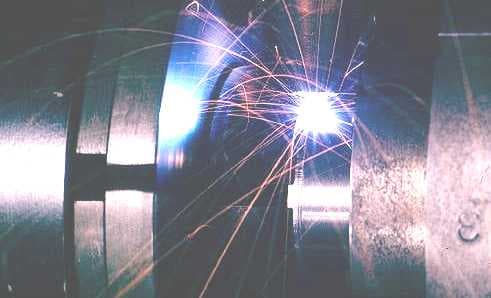
IX. Laser Rapid Prototyping
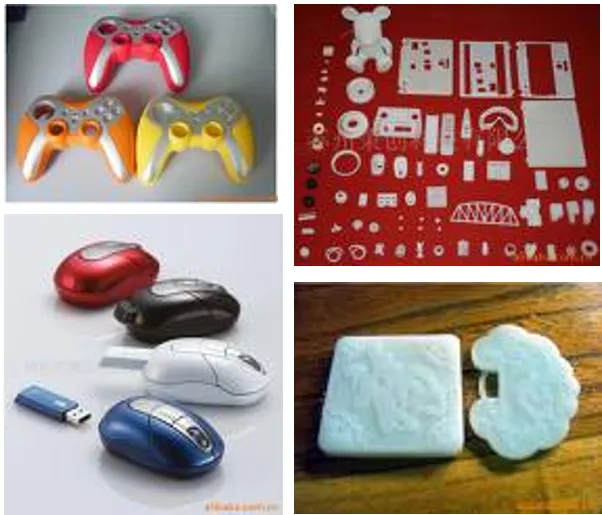
X. Laser Engraving
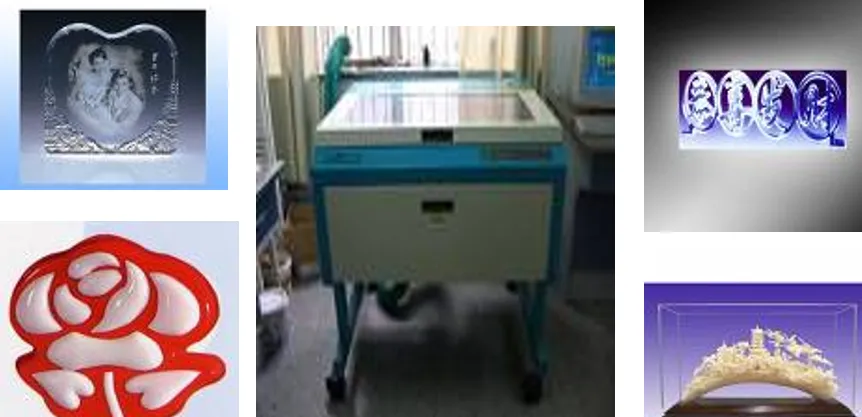
XI. Laser Nuclear Fusion

XII. Laser Medical Treatment
| Laser | Wavelength(μm) | Treatment Subjects (Cases) |
| CO2 Laser | 10.6 | Orthopedics (pigmentation, hemangioma, skin cancer), Orthopedic Surgery (bone incision), Thoracic Surgery (cardiovascular surgery), Neurosurgery (meningeal tumors, acoustic neuroma), Otorhinolaryngology (treatment of the bronchial system and vocal cords), Oral Surgery (tongue removal, oral cancer), Ophthalmology (enucleation), Dentistry (dental caries sterilization), Gastroenterological Surgery (anastomosis of the colon and appendix, digestive tract incision), General Surgery (tumor removal, skin grafting). |
| Argon Ion Laser | 0.4880.514 | Ophthalmology (retinal detachment and cataract treatments), Neurosurgery (auditory nerve tumor), Plastic Surgery (pigmentation removal and various reshaping procedures), Internal Medicine (stomach ulcers), Dermatology (removal of moles, age spots, and tattoos). |
| YAG Laser | 1.06 | Internal Medicine (Non-surgical Coagulation Treatment for Gastrointestinal Bleeding, Polypectomy), Urology (Removal of Bladder Tumors, Obstructions and Stones), Laser Acupuncture (Laser Stimulation Effect) |
| Ruby Laser | 694 | Orthopedics (skin disorders), ophthalmology (glaucoma), dentistry (removing tartar) |
| Dye Laser | Tunable wavelength | Ophthalmology (Glaucoma), Internal Medicine (Selection of Endoscope Coagulation) |
| Krypton Laser | 0.350.531 | Organizational Selection of Condensation, Phototherapy |
| Ammonia Molecular Laser | 0.337 | Biological Basic Research, Phototherapy |
| He-Ne Laser | 0.633 | Laser Acupuncture (Laser Stimulation Effect) |
| ArF Excimer Laser | 0.193 | Ophthalmology (Corneal Curvature Correction) |
XIII. Laser Communication
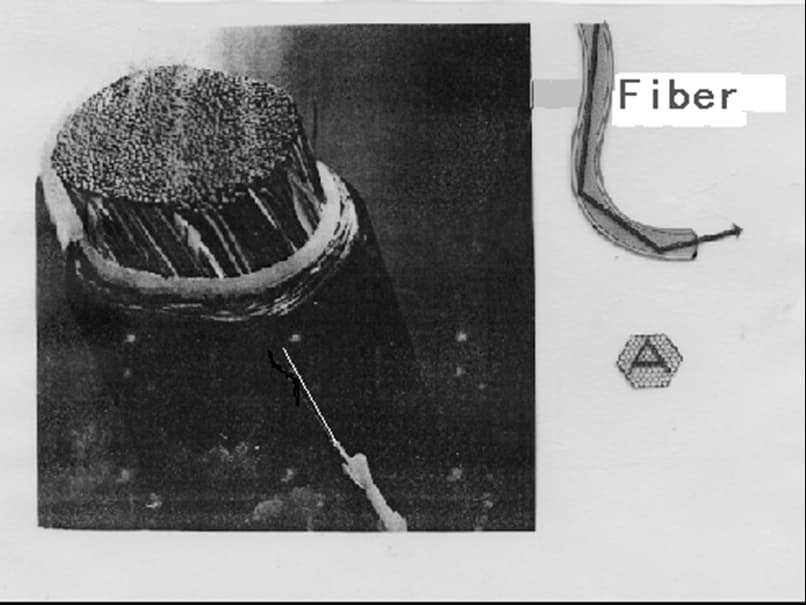
As the frequency of light waves is several orders of magnitude higher than that of radio waves, a very thin optical fiber can carry an amount of information equivalent to what a cable of this thickness in the picture can carry.
XIV. Laser Weapons

XV. Laser Display


